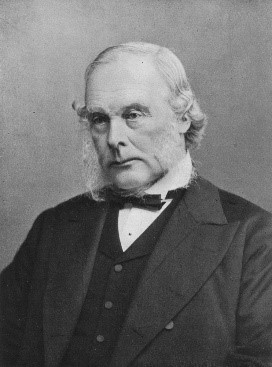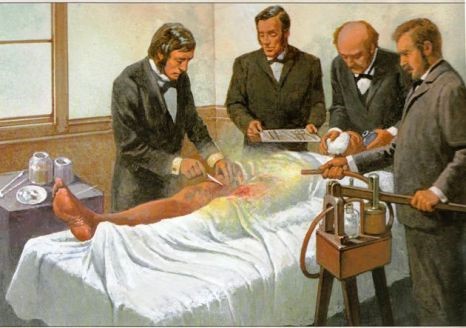If you want to know who you can thank for antiseptic treatments and cleanliness in medical environments, then that would be Joseph Lister. He was a surgeon who revolutionised how surgical practice took place towards the end of the 19th century.
Today, we take it for granted that surgery will be performed in sterile conditions, but this wasn’t always the case. Before Lister’s discovery, people could successfully survive surgery, only to die from infection afterwards, known as ‘ward fever’.
Lister was born in Essex and always showed an interest in surgery. He was present at the very first operation to be carried out under anaesthetic in 1846. He passed his exams and became a fellow of the Royal College of Surgeons in 1852.
He moved to Glasgow in 1860, becoming a Professor of Surgery. He had read and studied the work done by Louis Pasteur on micro-organisms and decided to conduct an experiment using one of his techniques. The experiment involved exposing a wound to chemicals.
Thus, began his work with antisepsis. Lister’s earlier work was much more focused on how blood coagulates and the role of blood vessels in the early stages of inflammation. He was fascinated by the healing of wounds. He had already tried different methods of promoting healing through cleaning and developed theories surrounding the problem of sepsis. Medical breakthroughs are happening all the time thanks to continuing research and the important role of trials. Have you ever wanted to contribute to science? Consider Paid Medical Trials with www.trials4us.co.uk
He advanced the idea that sepsis could be coming from a dust-like material and not the popular idea of the time that it was caused by ‘miasma’ or bad air. Whilst not quite coming to the conclusion that the dust was living matter, he was much closer to the truth than others of the time.
Lister was greatly influenced by the theories of Pasteur, in particular the theory that micro-organisms lead to fermentation and disease. He developed these theories by conducting experiments on putrefaction and fermentation. Lister’s interest in coagulation and inflammation convinced him to accept Pasteur’s theories.
To start with, Lister believed germs to be carried only in the air. This theory, although not correct, was still helpful as he tried to impose an antiseptic barrier between the air and wounds. This managed to protect the site of the wound from contamination from the surgeon’s hands and instruments. Carbolic acid was the antiseptic he used. This method was first used successfully in 1865. Two years later, Lister published a series of papers detailing successful cases where his methods had been employed.
His success was dramatic indeed. Between the years of 1865 and 1869, mortality rates during and after surgery fell from 45% to 15% on his Male Accident Ward.







